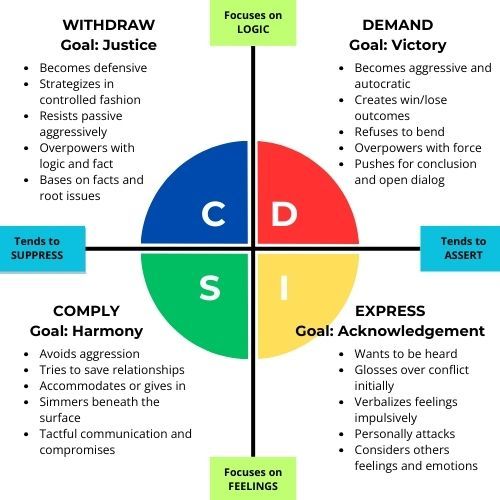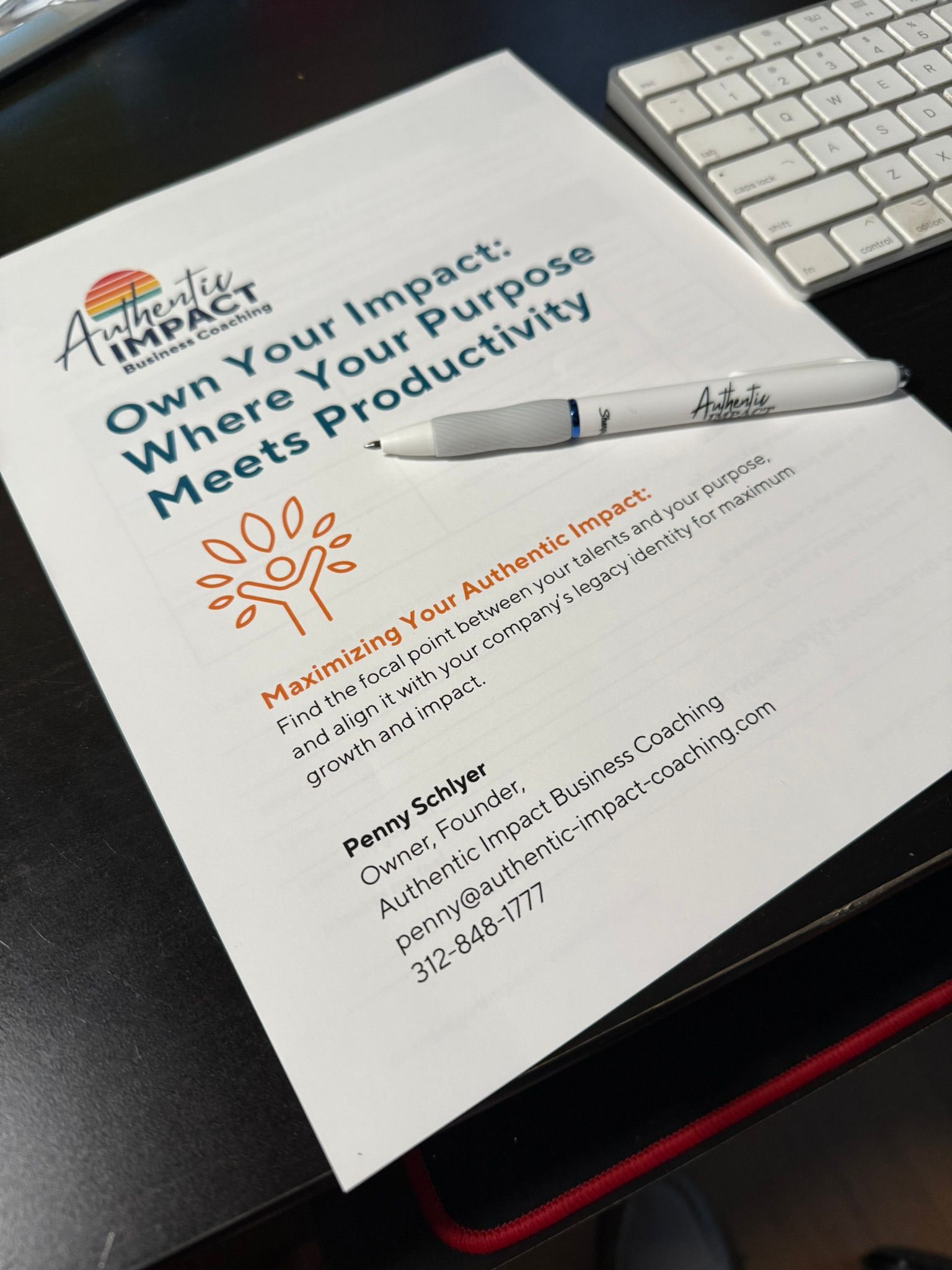Harness family dynamics to strengthen culture and continuity
Every family business runs on power, some you can see on an org chart and some you can only feel. The felt part is what shapes how people speak up in meetings, who gets called after the meeting, and why decisions sometimes change at the dinner table.
When we recognize these currents and look at them through DISC tendencies, power becomes something you can steer instead of something that steers you.
First, Identify the Power Currents
Think about your daily interactions and identify five power currents that could be flowing at once:
Role: Who has formal decision rights on paper and in the organizational structure.
Relationship: Who is trusted and consulted first, which could be someone from the family or a trusted resource.
Reputation: This is the story people believe about you, your strengths, and what you’re capable of.
Resources: Can be driven by amount of equity the individual has, the potential for additional capital, or access to key customers and partners.
Ritual: These are traditions that quietly confer authority, who sets the agenda, who opens meetings, who closes them, who has the founder’s ear.
None of these are “good” or “bad.” They simply exist. The trouble starts when a silent current overrides the one that should be in charge for the decision at hand.
Recognize any of these scenarios? We do!
- The founder pops into an operations review “just to listen,” asks two pointed questions, and the plan shifts by Monday. On paper, Role says the COO decides. In practice, Ritual, the founder’s presence, wins.
- It’s assumed the oldest sibling will step in to the highest-level role. That’s Ritual outweighing Reputation, even if the younger, quieter, steadier sibling has the track record to run the day-to-day.
- There is resistance to the owner’s daughter being promoted to lead the team on the shop floor. This results in a conflict between Reputation and Ritual with the new leader needing to overcome doubts some may have about her abilities.
- Sometimes Relationship power spills in from the “kitchen cabinet”: the spouse who isn’t on payroll but is absolutely in the loop. The leadership team aligns on Friday; by Tuesday, after a long talk at home, the decision is different. No conspiracy, just unacknowledged power that impacts the decision-making process.
Emotions, rituals, and preconceived ideas sometimes stand in the way of growth and progress in the family business. Unfortunately, when undercurrents like this are not addressed with transparency, feelings get hurt, people get angry and resentful, and trust erodes.
Second, Use DISC as a powerful force for growth
Keep in mind the tendencies of the different DISC communication styles. Which one are you?
- D styles often project authority through decisiveness and speed. Under stress, that can slide into bulldozing others.
- I styles energize and connect. Used well, they rally people; unchecked, they create side-groups and may skip steps.
- S styles carry power through steadiness and care. They’re the backbone of continuity, but keeping the peace can turn into avoidance.
- C styles wield standards and expertise. They keep quality high, yet “we’re not ready” can become a permanent veto.
Each style can be exacerbated depending on the situation and who you’re engaging with. In a family business, or with close associates we tend to fall into the same patterns and habits – good and bad – that lead to the same outcomes – good and bad.
Find ways to address conflict head on. When behavior tendencies collide and you have the extra layer of family roles and history, you will have conflict. Use the chart below to identify yourself and the players involved and take a few minutes to reflect on your goals and their goals.
In what ways can you recognize your style, empathize with their perspective, and moderate your stress/conflict response?
Needs-Based Conflict Response

Here’s an example playing out from the chart above.
If you’re a D, your response during times of conflict and stress will be to DEMAND and your goal is to win. You probably take a more logical, data-oriented approach and can be very assertive in pushing for a conclusion. You work fast. You want a decision soon.
On the other hand, if you’re an S, your response during times of conflict and stress will be to COMPLY. Your goal is to maintain harmony so you tend to suppress your perspectives especially when you do not agree.
If you’re a C, you will WITHDRAW and can be very put off by the speed at which the D is trying to make the decision. You likely take the S’s agreement as a personal slight for not standing up for what you know is right - you two have already discussed it.
As an I, you just want to EXPRESS your opinion and be heard. You like to verbalize your opinions and want the team to acknowledge your contribution. You also try to keep the peace and are concerned about people’s feelings.
Some examples you’ll recognize in your own environment:
- Sales (I) vs. Ops (C): One side treats a fast “yes” as momentum; the other treats “right, then yes” as safety. If you haven’t agreed on what “good enough for a pilot” looks like, identify concrete steps to move forward, and agree on a review date, the conversation will loop forever.
- The fun branch sets culture: A highly social cousin becomes the unofficial chief morale officer. Engagement is high; execution is wobbly. Your C will provide the guardrails (standards) and your S will emphasize routines (consistency). Without it, culture drifts from promise to performance theater.
- Data as power: A respected expert (C) holds the numbers. Meetings stall because the model isn’t “final.” Expertise matters, but control of information can quietly become control of decisions, which can lead to indecision and analysis paralysis.
- The in-law discount (and not in a good way): A capable married-in leader fights a credibility tax. The assumption “outsider” outranks their actual Reputation. If wins aren’t made visible, their authority stays invisible too.
- Email cc politics. People get blanketed on messages to signal clout. D/I readers see momentum; S/C readers feel pressure or end-runs. The same action sends different power signals by style.
Underneath these patterns are assumptions that quietly run the company: “Equity equals authority.” “Oldest equals leader.” “Quiet equals disengaged.” “Outgoing equals visionary.” “Family dinner conversations don’t count.” “If it’s urgent, quality can wait.” “If it isn’t perfect, we can’t start.” None of these are always true. They’re just familiar and familiarity masquerades as truth.
Try This 60-Second Conflict Reset
So how do you keep power from hijacking decisions without turning family life into a courtroom? Keep it simple. You don’t need a workshop to start. You need one habit that takes sixty seconds and changes the tone of the next hour.
One habit for this week: The 60-Second Conflict Reset (Need → Mirror → Move)
When a conversation heats up, use this one habit to keep unspoken power and style triggers from running the show.
Step 1 — Name your need (10 seconds)
Say what you personally need in this moment without blaming
“What I need right now is to [move forward / be heard / keep harmony / get it right] so we can make a good call.”
Step 2 — Mirror their need (10 seconds)
Identify their need and state it back to them in plain language.
“I understand that you need [to make a decision quickly / a voice in the decision / to maintain stability / more proof].”
Step 3 — Move with a micro-commitment (40 seconds)
Offer a path that honors both needs: a small step + a review point.
“Let’s [pilot X until Friday] and [review the numbers Monday].”
One-liners by DISC (use yours)
- If you’re a D (Demand/Win):
“I need a decision to keep momentum. I hear you need more certainty. Let’s pilot through Friday and review Monday.” - If you’re an I (Express/Be heard):
“I need to talk this through so you see my thinking. I hear you want a clear process. I’ll outline my idea in 5 bullets; then we pick next steps.” - If you’re an S (Comply/Harmony):
“I need us to stay together on this. I hear you need movement. Let’s try the change on one line this week and check impact as a team.” - If you’re a C (Withdraw/Correctness):
“I need enough facts to be confident. I hear you need speed. Give me 2 data points by noon; I’ll green-light a limited pilot.”
Why it works:
By recognizing your own style and that of others and making small adjustments, you are taking an alternate path to get to yes. This approach lowers defensiveness and creates motion without ignoring risk. Decisions stop ping-ponging between power currents (Role, Relationship, Reputation, Resources, Ritual) because you’re meeting the human driver first and then moving the work forward.
In Closing
Power isn’t the villain in a family business, it’s the current. When you can see how it flows and how each DISC style tends to use it, you stop getting dragged and start steering. The 60-Second Conflict Reset - Name your need → Mirror theirs → Move with a micro-commitment keeps decisions human, fast, and on-purpose.
Change happens in increments. Use this tactic at least once this week. Notice how the room relaxes when needs are named, and how momentum returns when you make a small move with a review point. That’s the shift: unspoken power turning into shared progress.
Next up: When Power Trips the System—the friction points you can predict by style and the quick “reset” moves that keep authority productive.
If you're interested in how DISC can turn unspoken power into progress in your business, book a call with me to discuss!











